More Coverage
Twitter Coverage
Satyaagrah
Written on
Satyaagrah
Written on
Satyaagrah
Written on
Satyaagrah
Written on
Satyaagrah
Written on
Join Satyaagrah Social Media
Saraswathi Rajamani, at 16, became the youngest and first female spy for INA, boldly recruited by Netaji in 1942, courageously spent two years spying on the British in Myanmar during WWII, a pivotal yet overlooked heroine in India's struggle for freedom

Netaji Subhash Chandra Bose remains one of the most enigmatic figures of India's freedom struggle, often unrecognized by the annals of history and left to the margins by fate. Discussing him and the Indian National Army (INA), an organization that he passionately nurtured, invariably uncovers new facets and stories. Indeed, Netaji’s life and the experiences of his companions in the INA are shrouded in fascination and continue to draw keen interest from scholars and citizens alike.
More than six decades since India attained its hard-fought independence, the valor and efforts of numerous lesser-known freedom fighters have gradually dimmed in the collective consciousness of the nation. These unsung heroes, who received scant attention from chroniclers and historians, were instrumental in laying the groundwork for India’s emancipation from British dominion. Among these forgotten warriors is a woman whose story is not widely known across India—a woman whose life was a tapestry of secrecy and peril, devoted to the cause of liberating her motherland from colonial shackles. Her acts of bravery and sacrifice are part of a larger, untold narrative of the countless individuals who risked everything for India's sovereignty.
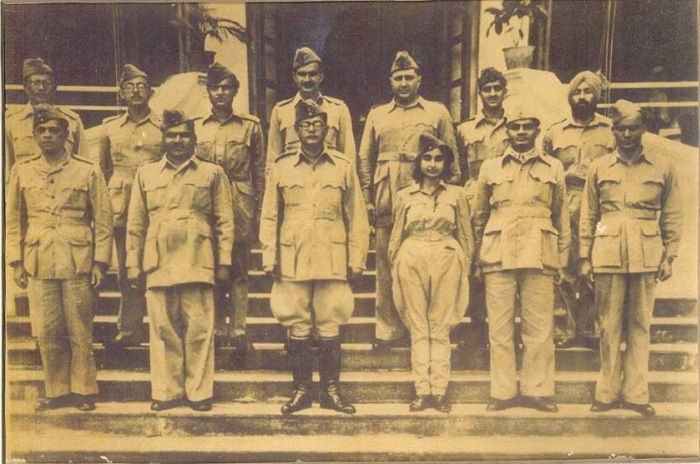 Indian National Army |
Are you familiar with Saraswathi Rajamani, who stands among the bravest in the ranks of India's freedom fighters? Born into affluence in Rangoon, her early life was far from ordinary. Her father, a prosperous gold mine owner in Trichy, was a staunch opponent of British colonial rule. To escape the clutches of the British authorities and avoid arrest, he relocated his family to Rangoon, where he could discreetly support the cause of Indian independence. His name was well-known among the wealthiest Indians in the region. Yet, it was Saraswathi’s deep-rooted patriotism that drove her to join the Indian freedom struggle from her early years, a passion for her country that was wholeheartedly shared by her family.
At the tender age of just ten, Saraswathi Rajamani had an encounter that would mark a significant moment in her life. When Mohandas Karamchand Gandhi paid a visit to her family's home, it was a significant event. While her relatives were engrossed in discussions with Gandhi, young Rajamani was elsewhere, honing her skills in shooting. Even at such a young age, she found herself at odds with Gandhi’s philosophy of non-violence. Her youthful spirit was drawn not to passive resistance but to the more active measures of fighting for freedom.
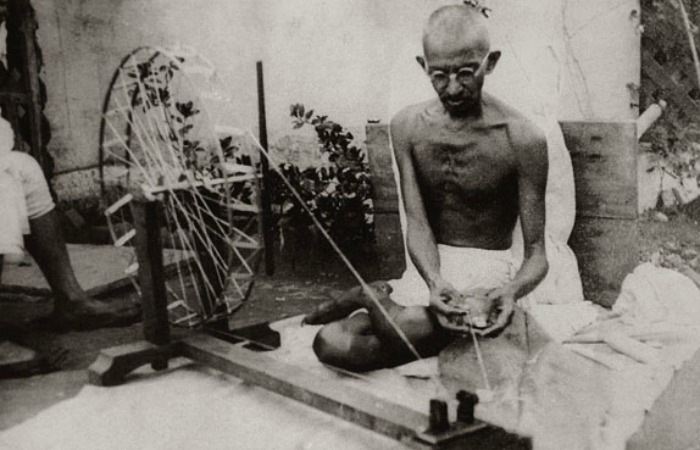 |
The encounter between the young Saraswathi Rajamani and Mahatma Gandhi is an illuminating episode in the annals of India's freedom struggle. Gandhi, taken aback to see a young girl wielding a gun, inquired about her need for such a weapon. Rajamani, with conviction and without a moment's hesitation, responded that she intended to use it against the British oppressors.
When Mahatma Gandhi saw a child, Saraswathi Rajamani, holding a gun, he was surprised and asked her, "why she needed a gun."
"To shoot down the Britishers, of course," was Rajamani's forthright response, not even glancing up as she spoke.
Gandhi, known for his staunch advocacy of non-violence, advised her, "Violence is not the answer, little girl. We are fighting the British through non-violent ways. You should also do that," trying to guide her towards peaceful resistance.
However, Rajamani, filled with a sense of purpose, retorted, "We shoot and kill the looters, don't we? The British are looting India, and I am going to shoot at least one Britisher when I grow up," expressing her unyielding resolve to defend her nation.
Despite Gandhi's counsel advocating a peaceful approach, Rajamani's determination to resist the British through direct action was resolute. Her spirited exchange with one of India's most iconic leaders highlights the diverse ideologies that fueled the freedom struggle—a testament to the fierce independence and courage of even the youngest individuals who dreamed of an independent India.
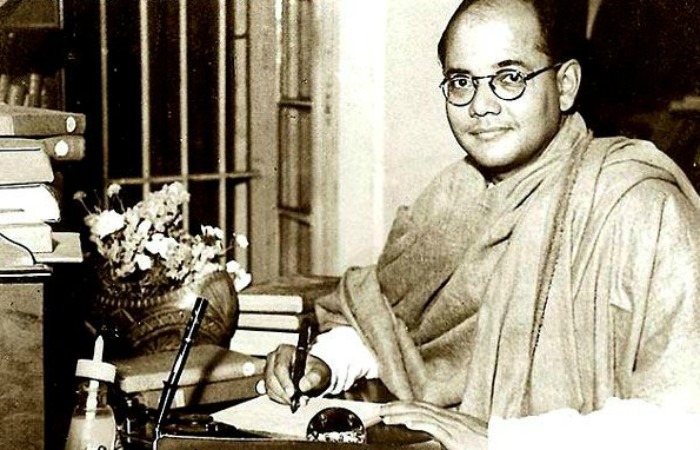 |
She Grew and Heard About Netaji
Born in 1927, Rajamani became familiar with the legendary figure of Netaji Subhash Chandra Bose and his revolutionary force, the Indian National Army (INA). Netaji is credited with bestowing upon her the name Saraswathi, and the story behind it is quite remarkable. In 1942, when Bose visited Rangoon to rally support and gather resources for the INA, a 15-year-old Rajamani found herself in the audience, listening intently to his speech.
Bose's powerful words called for the Indian community in Burma to arm themselves in the struggle to free India from British dominion. Rajamani was so moved by Netaji's call to action that she contributed her personal treasures, all her gold and diamond jewelry, to the INA's cause. Her gesture of support was not solitary; her father had already made significant financial contributions to the INA. Learning of her generous donation and her young age, Netaji suspected that youthful impetuosity had influenced her decision. He took the initiative to visit her home with the intention of returning the jewelry.
Upon his arrival, Netaji found that Rajamani was steadfast in her decision to support the freedom fight, insisting that the jewels were hers to give, not her parents'. Her unwavering stance and clarity of thought left a lasting impression on Netaji. In recognition of her wisdom and dedication, he named her Saraswathi. For Netaji, the name symbolized eternal wisdom, unlike Lakshmi, which represented wealth that could come and go. In Rajamani, he saw the embodiment of the wisdom and learning that Saraswathi, the goddess of knowledge, represents. From that day forward, she came to be known as Saraswathi Rajamani.
Following the inspiring encounter with Netaji Subhash Chandra Bose, Saraswathi Rajamani, alongside four of her friends, was filled with a fervent desire to actively participate in India's liberation struggle. The profound impact of Netaji's speech ignited within them a burning passion to contribute to the fight for India's freedom. Encouraged by their families, who imposed no constraints on the aspirations of their daughters, all five young women stepped forward to join the Indian National Army (INA). It is noteworthy that in Rajamani's family, particularly, there was a progressive stance regarding the involvement of girls in such endeavors; her father and the parents of her friends did not hinder their decision to join the freedom movement.
Understanding the courage and commitment of these young women, Netaji Subhash Chandra Bose welcomed Saraswathi and her friends into the folds of the INA. He assigned them to the Rani of Jhansi regiment, a unit that symbolized the valor and resilience of women in the face of adversity. However, their induction was not for combat on the front lines but for a mission that required equal bravery and stealth. Netaji recognized their potential to serve as covert spies within the INA’s intelligence wing. Their assignment was critical yet dangerous: to clandestinely gather and relay information vital for the strategic operations of the INA.
This decision marked the beginning of a perilous journey for Saraswathi Rajamani and her comrades. As members of the Rani of Jhansi regiment, they were not just soldiers in uniform but bearers of the hopes and aspirations of a nation yearning for freedom. Their role as spies meant they would operate in the shadows, risking their lives to smuggle out secrets that could potentially turn the tide in favor of the INA. The trust and responsibility placed on their shoulders by Netaji himself were a testament to their bravery and a reflection of the inclusive spirit that the INA embodied, recognizing the invaluable contributions women could make to India's struggle for independence.
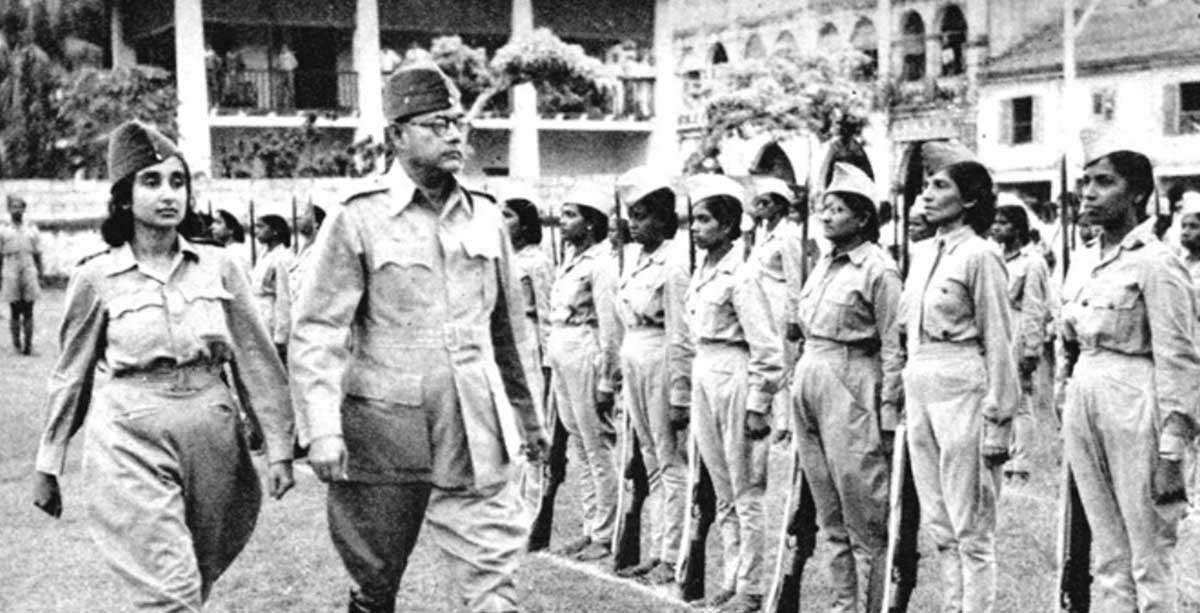 Freedom Fighter Saraswathi Rajamani Who Served As A Young Spy In Indian National Army |
At the tender age of 15, Saraswathi Rajamani became the youngest member to serve as a spy in Netaji Subhash Chandra Bose's esteemed all-woman Rani of Jhansi Regiment. This unit was notably led by the courageous Captain Lakshmi Swaminadhan (Sahgal). The regiment was unique, comprising Tamil-speaking girls and women who had been recruited by Bose from various Southeast Asian countries such as Burma, Singapore, Malaysia, and Thailand. These individuals, predominantly the daughters of businessmen and estate workers from the Indian diaspora in these regions, joined the regiment out of a deep sense of patriotism and a desire to contribute to India's freedom struggle. After the war, some of these brave women returned to their ancestral homes in Tamil Nadu, carrying with them the stories of their contribution to India's fight for independence.
In an audacious move, Rajamani and four of her friends adopted the guise of boys to infiltrate British military camps and the residences of officers as errand boys. This daring strategy allowed them to get close to the sources of vital information without arousing suspicion. Their primary mission was to intercept and relay government orders and military intelligence from the British officers directly to the INA, playing a crucial role in the intelligence-gathering operations of the freedom movement. During this period, Rajamani was known by the alias "Mani," a name that concealed her true identity and enabled her to carry out her tasks with greater anonymity.
This espionage activity successfully continued for nearly two years, a testament to the skill and courage of these young women. However, the mission faced a significant setback when one of Rajamani's friends was apprehended by the British troops. Demonstrating quick thinking and bravery, Saraswathi Rajamani devised an ingenious plan to rescue her comrade. Disguising herself as a dancer, she daringly entered the camp where her friend was held captive, ready to execute a rescue that would require all her wit and courage.
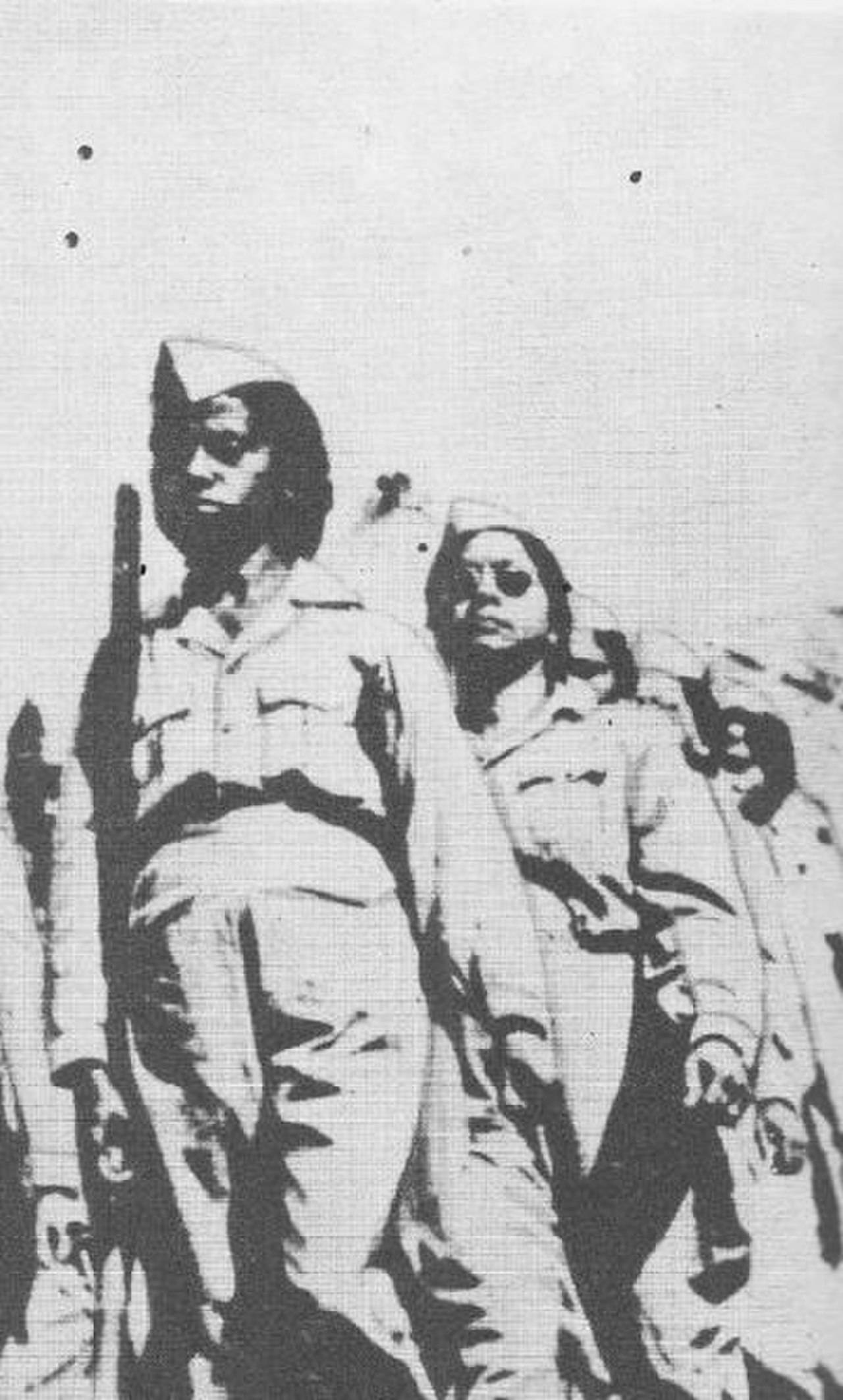 Freedom fighter Rajamani and Neera Arya |
In a daring escapade that sounds like it's straight out of a spy novel, Saraswathi Rajamani took a bold step to rescue her friend from captivity. She cleverly drugged the British officers guarding her friend, enabling both of them to make their escape. However, their flight to freedom was not without its perils. During their escape, Rajamani was struck by a bullet in her leg. Despite the severe injury, her determination did not wane, and they continued to flee from their pursuers. With the British soldiers hot on their trail and conducting an extensive search operation, the two girls found a temporary refuge by climbing a tree. They remained hidden among the branches for three agonizing days, waiting patiently until the British soldiers had moved on and the coast was clear for them to make their getaway.
This gunshot wound resulted in a permanent limp for Rajamani, a lifelong reminder of her audacious act. However, she harbored no regrets about the injury. Instead, she carried her limp as a badge of honor, a tangible symbol of her contribution to India's struggle for independence. Her bravery did not go unnoticed; the Emperor of Japan publicly recognized her courage in a ceremony attended by Netaji himself. This recognition was not merely ceremonial; it was accompanied by a significant promotion. Rajamani was elevated to the rank of Lieutenant within the Rani of Jhansi Regiment, an acknowledgment of her valor and the critical role she played in the INA's intelligence-gathering efforts.
Rajamani's story is a testament to the indomitable spirit of those who fought for India's freedom. Her willingness to risk her life, endure pain, and face the prospect of capture speaks volumes about her dedication to the cause.
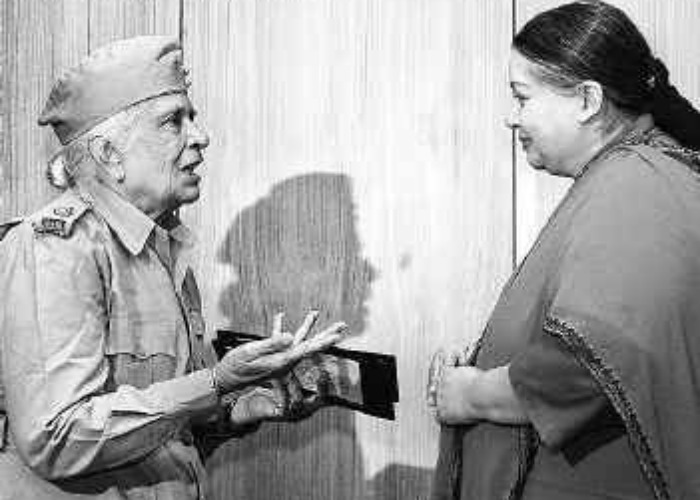 |
INA Disbanded and Family Returned to India
With the conclusion of World War II, the Indian National Army (INA) was officially disbanded. Following the directives of Netaji Subhash Chandra Bose, Saraswathi Rajamani returned to India, accompanied by her family. The Rajamanis had dedicated their entire fortune to the freedom struggle, a testament to their unwavering commitment to India's liberation from British rule. However, their return to India marked the beginning of a starkly different chapter in their lives. Having given up their wealth for the cause, the family found themselves grappling with poverty, a profound shift from their earlier circumstances.
For years, the whereabouts and circumstances of Rajamani's family remained shrouded in obscurity, until 2005, when a newspaper report shed light on her challenging living conditions. It was revealed that she was subsisting on a modest freedom fighter's pension, residing in a small, one-room flat in an underprivileged area. Despite these hardships, Rajamani's spirit remained indomitable, as she recalled memories of Netaji with reverence during a 2005 interview. She reminisced about his visionary leadership, his adeptness at adopting disguises, and his deep respect for Swami Vivekananda's ideals, highlighting the profound impact Netaji had on those who served with him in the INA.
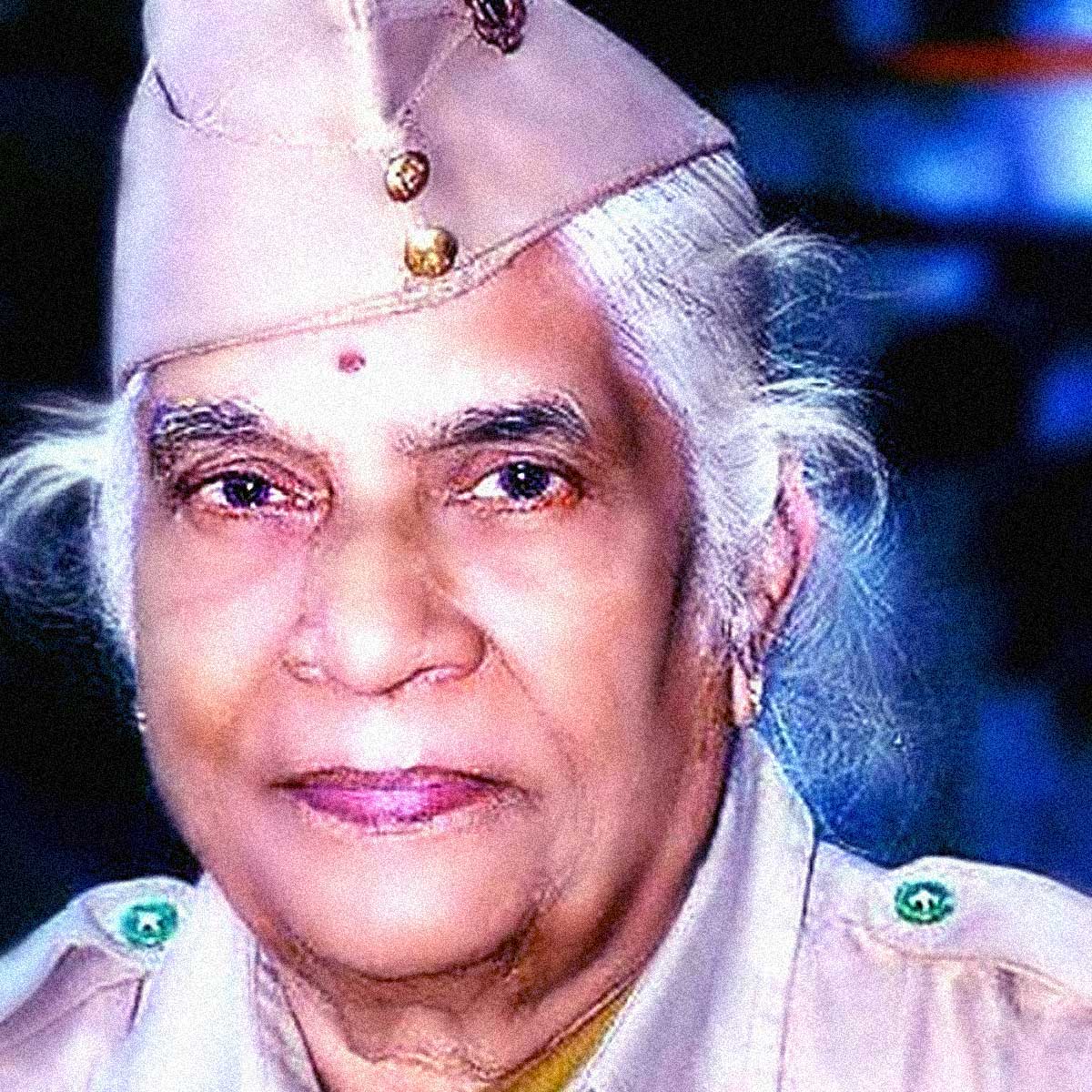 |
In spite of the financial and physical constraints, Rajamani continued to embody the principles of service and generosity. She engaged in collecting old clothes, repairing them, and distributing them to those in need. Demonstrating remarkable altruism, she even allocated a portion of her meager pension to aid the victims of the 2006 Tsunami disaster. Recognizing her contributions and the difficulties she faced, the then Chief Minister of Tamil Nadu, Jayalalitha, stepped in to provide support. Rajamani was offered a rent-free flat and financial assistance amounting to Rs. 5 lakhs, a gesture that acknowledged her sacrifices for the nation.
Saraswathi Rajamani's story is a poignant reminder of the personal costs borne by those who fought for India's freedom. Her resilience in the face of adversity, her dedication to serving society, and her unwavering patriotism serve as an enduring inspiration. As we salute her bravery and her contributions to the nation, we are reminded of the countless unsung heroes of the independence movement. Jai Hind!
 |
References:
thebetterindia.com - Sanchari Palindiatimes.com - Maninder Dabas
timesofindia.indiatimes.com - Jaya Menon
Saffron Swords: Centuries of Indic Resistance to Invaders - Manoshi Sinha Rawal, Yogaditya Singh Rawal
 Support Us
Support Us
Satyagraha was born from the heart of our land, with an undying aim to unveil the true essence of Bharat. It seeks to illuminate the hidden tales of our valiant freedom fighters and the rich chronicles that haven't yet sung their complete melody in the mainstream.
While platforms like NDTV and 'The Wire' effortlessly garner funds under the banner of safeguarding democracy, we at Satyagraha walk a different path. Our strength and resonance come from you. In this journey to weave a stronger Bharat, every little contribution amplifies our voice. Let's come together, contribute as you can, and champion the true spirit of our nation.
 |  |  |
| ICICI Bank of Satyaagrah | Razorpay Bank of Satyaagrah | PayPal Bank of Satyaagrah - For International Payments |
If all above doesn't work, then try the LINK below:
Please share the article on other platforms
DISCLAIMER: The author is solely responsible for the views expressed in this article. The author carries the responsibility for citing and/or licensing of images utilized within the text. The website also frequently uses non-commercial images for representational purposes only in line with the article. We are not responsible for the authenticity of such images. If some images have a copyright issue, we request the person/entity to contact us at This email address is being protected from spambots. You need JavaScript enabled to view it. and we will take the necessary actions to resolve the issue.
Related Articles
- Santi Ghosh and Suniti Choudhury: Two Teenage Freedom Fighters Assassinated British Magistrate
- A Great man Beyond Criticism - Martyrdom of Shaheed Bhagat Singh (Some Hidden Facts)
- Hero of Pawankhind: Veer Maratha Bajiprabhu Deshpande, who led 300 Soldiers against 12000 Adilshahi Army defending Shivaji
- Our first true war of independence lie forgotten within the fog of time and tomes of propaganda: Sanyasi Rebellion, when "renouncers of the material world" lead peasants in revolt against British and fundamentalist islamic clans
- How Britishers were challenged by 83 year old Ropuiliani in Mizoram in 1892-’93
- Jhalkaribai: The Indian Rebellion Of 1857 Who Took on British Forces Disguised as Laxmibai
- Vinayak Damodar Savarkar – A Misunderstood Legacy
- Tirot Singh: An Unsung Hero of the Khasi Tribe who destroyed British with his skill at Guerrilla Warfare
- Cross Agent and the hidden truth of massacre of Jallianwala Bagh - Martyrdom of Shaheed Bhagat Singh (Some Hidden Facts)
- Kartar Singh Sarabha - The Freedom fighter who was Hanged at the age of 19 and inspired Bhagat Singh
- Anuj Dhar claims that Subhas Chandra Bose was suspected of being ‘poisoned’ after ouster from the post of Congress president
- Taimur was attacked and defeated by 20 year old Rampyari Gurjar and her army of 40,000 women
- Birth of our National Anthem: Original recording of 'Jana Gana Mana' performed by the Radio Symphony Orchestra of Hamburg, Germany, 1942 in the presence of Netaji Subhash Chandra Bose
- Theft on a Grand Scale - Britain stole $45 Trillion from India and lied about it. Indian money developed Britain and Other Countries
- Letter to Shaheed Sukhdev 5th April, 1929 - Collected work of Shaheed Bhagat Singh and his Co-patriots
























